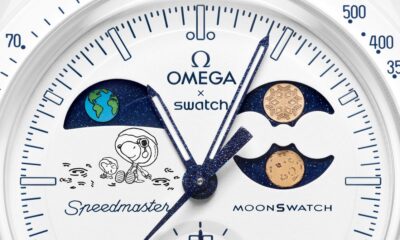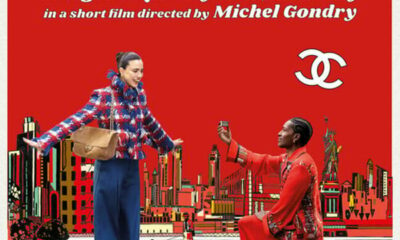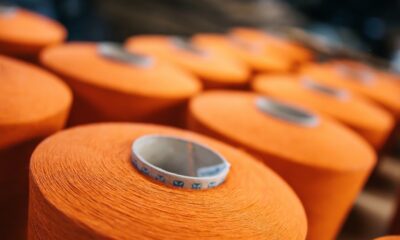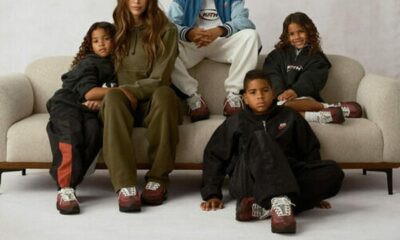Fashion
How a Ukrainian designer helped Zelenskyy dress for Trump diplomacy
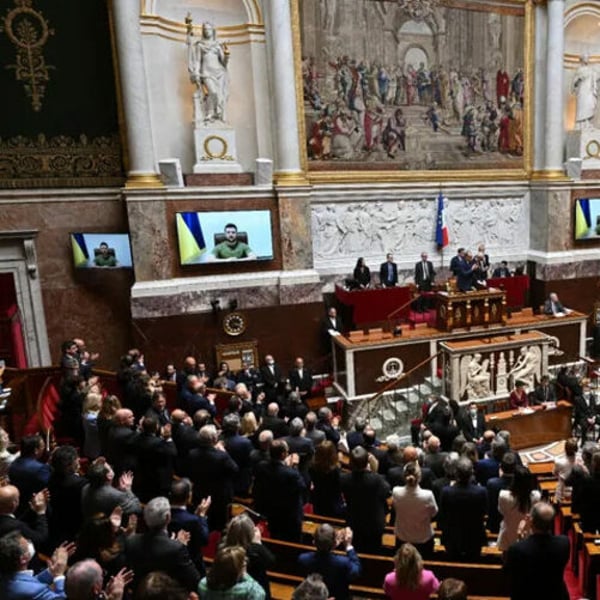
By
Reuters
Published
August 19, 2025
When Ukrainian designer Viktor Anisimov showed Volodymyr Zelenskyy a new black suit last Friday, it included a small detail. A back vent on the back inched it closer to a civilian suit, compared to the military outfits the president has favoured throughout the war in Ukraine.
“These are our hopes for peace,” Anisimov told Reuters about the tweak. “We think that if we add something subtle to this image, something from civilian clothing to his uniform, then it will be like a lucky charm.”
On Monday, the lucky charm worked to set a warm tone for a White House meeting with US President Donald Trump. Moments after Zelenskyy arrived, Trump complimented him on the suit.
Zelenskyy’s dark military-style outfit was one of the things Trump objected to during a disastrous Oval Office meeting in February, when the Ukrainian leader was given a public scolding.
Anisimov, 61, from the northern region of Chernihiv, said he was watching videos of that interaction and felt the jabs. He perceived them as aimed at the Ukrainian citizens, not just at Zelenskyy. “There was a slight sense of despair because they do not understand how we breathe, how we live,” he said.
A reporter at the White House who asked Zelenskyy in February why he was not wearing a suit also praised the Ukrainian on his attire on Monday, saying “You look fabulous in that suit”.
Anisimov said he was not watching for criticism or compliments this time but wanted to ensure the Ukrainian president looked dignified. “They praise, they scold. If we win, and we will win, then whose suit it was doesn’t matter,” he said.
Zelenskyy has worn military-type outfits, often with collar-less shirts and heavy boots, to show solidarity with Ukraine’s troops since Russia’s full-scale invasion in February 2022. “In this moment, internally, we all changed, everything changed, life changed. It was a point of no-return,” Zelenskyy said in an interview with a Ukrainian media outlet a year later.
The black suit worn on Monday was originally presented, along with an identical navy option, as an outfit idea for Ukrainian Independence Day on August 24. While the team was going back and forth on the back vent, Anisimov took it back for alterations on Friday. Before he even got to making the adjustments on sleeves, the phone rang with an urgent request from the administration on Saturday – the president needed the suit for his US trip.
It was not the first time that Anisimov had been charged with changing the president’s style. In the early 2000s, then-comedian Zelenskyy and his team “Kvartal 95” sought to establish their identities on the Ukrainian screens after getting their initial break in comedy competitions. The process was gradual: black t-shirts gave way to white shirts with ties and then morphed into suits worn by the team during the shows.
Anisimov said he had not heard from Zelenskyy for over five years when a mutual acquaintance from the previous make-over contacted him in January. They floated the idea of creating a capsule collection for the president. Anisimov said he used the military uniform as an inspiration point to ensure versatility for all items in the capsule.
“I can’t say that we sewed (a suit) specifically for the NATO summit or for an important conversation with Trump and European leaders. The suit is just a suit,” Anisimov said, adding that Zelenskyy has about five similar-looking jackets with small tweaks. Since then, the Ukrainian president wore Anisimov’s designs to the funeral of Pope Francis in April and a NATO Summit in June, both occasions that helped to bring the US and Ukraine closer together after the public rift in February.
© Thomson Reuters 2025 All rights reserved.
Fashion
ITA to continue till Advanced Framework Agreement ratified: EU, Chile
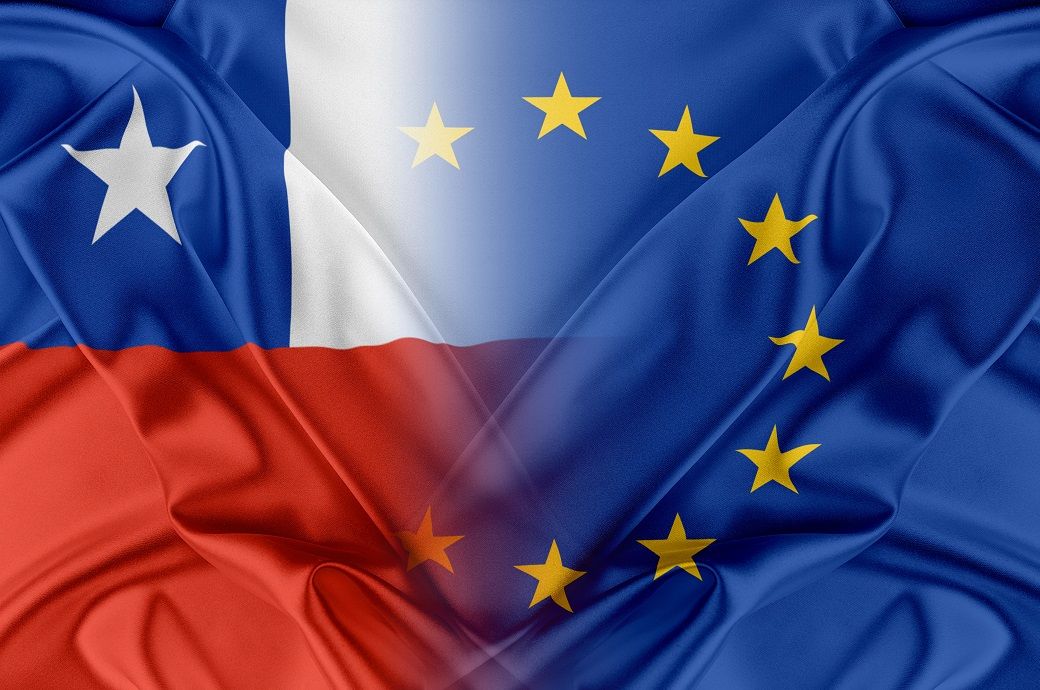
A review of the trade and sustainable development provisions of the ITA is under way.
EU high representative for foreign affairs and security policy Kaja Kallas recently met Chilean Minister of Foreign Affairs Alberto van Klaveren. Both co-chaired the first EU-Chile Joint Council under the Advanced Framework Agreement in Brussels.
The EU and Chile are committed to deepening their trade and investment relations under the Interim Trade Agreement, which came into force on February 1 and will remain in force until the new Advanced Framework Agreement has been fully ratified.
Both sides will continue to cooperate on ensuring reliable and sustainable supply chains, including through diversification and support to strategic investments.
The first EU-Chile Trade Council meeting was held under the new ITA, according to an EU release.
The EU is Chile’s third-largest trade partner and the top source of foreign direct investment (FDI).
Both sides will continue to cooperate on ensuring reliable and sustainable supply chains, including through diversification and support to strategic investments, a joint statement issued said.
Chile welcomed the interest of the EU in establishing a dialogue with the member countries of the Comprehensive and Progressive Agreement for Trans-Pacific Partnership (CPTPP). Both parties affirm their ambition to translate this dialogue into a shared agenda.
Both sides remain committed to ensuring the effective implementation of the Advanced Framework Agreement, and to achieving its full ratification.
The provisional application of the EU-Chile Advanced Framework Agreement began on June 1, 2025.
Fibre2Fashion News Desk (DS)
Fashion
Chanel debuts A$AP Rocky as ambassador, with Margaret Qualley teaser video

Published
November 30, 2025
Chanel has appointed A$AP Rocky as a new brand ambassador and debuted his tenure with a teaser video shot in New York co-starring Margaret Qualley.
The video appeared Sunday just 48 hours before Chanel’s couturier Michel Blazy will stage his debut collection of Métiers d’Art also in New York. It’s a unique line first created by Karl Lagerfeld that highlights the unique stable of artisans Chanel has assembled in such skills as embroidery, pleating, glove-making and costume jewelry.
Directed by Michel Gondry, the 2.49-minute short opens with the stars waking up in the bed of a walkup apartment in Williamsburg. Where, after a quick peck on her lover’s forehead, Qualley disappears into a tiny bathroom, before magically changing out of her blue nightie and reappearing in a red, white and blue houndstooth Chanel jacket, paired with pale blue pants, her hair in a chignon.
https://www.youtube.com/watch?v=live
No sooner than she has disappeared, than A$AP leaps out of bed and descends the tenement building’s outside steel stairs and sets off on a mad dash after Qualley. This leads to him swimming under the Brooklyn Bridge, and running north through the Lower East Side, before finally catching up with Qualley at Astor Place station. All the action backed up my moody ambient music courtesy of Le Motel.
In between, the rapper and husband of Rihanna, manages to find time to stop in two discount stores to acquire pants and a blazer. Arriving just in time, to genuflect onto one knee, and hold out a small white Chanel box, containing one assumes a diamond engagement ring, at the station entrance. The sight of which leads the actress to leap into the air in paroxysm of joy, before the happy couple march arm and arm back into the subway.
And off one assumes to attend the Métiers d’Art show, which will be revealed on Tuesday, 8 p.m. NYC time.
Copyright © 2025 FashionNetwork.com All rights reserved.
Fashion
Canada’s Lululemon revamps commercial strategy with new global leader
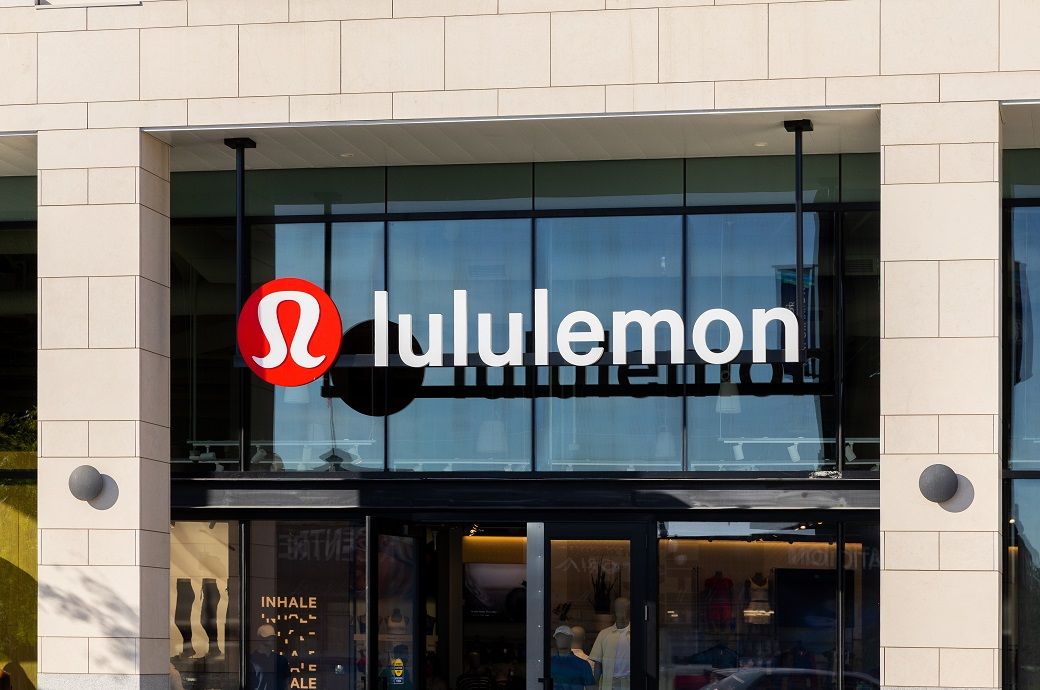
Ms. Burgoyne joined lululemon in 2006 and became the company’s first President in 2020. Throughout her tenure, she has assumed roles of increasing responsibility and led the North America business through periods of rapid growth and expansion.
Lululemon Athletica has announced that Celeste Burgoyne, president of the Americas and global guest innovation, will leave at the end of December 2025 after 19 years with the brand.
The company will consolidate regional leadership and has appointed André Maestrini as president and chief commercial officer, giving him global oversight of stores, regions, digital channels and commercial strategy.
“We are grateful for Celeste’s leadership and significant contributions to lululemon’s business and culture over the past 19 years. She has been instrumental in growing our footprint in the Americas, creating high-quality guest experiences, and mentoring our teams across the organization,” said Calvin McDonald, Chief Executive Officer, lululemon. “I deeply appreciate her partnership and friendship, and we wish her all the best in the future.”
“My time at lululemon has been both inspiring and rewarding beyond belief,” said Ms. Burgoyne. “I am so proud of what we have accomplished as an organization since I joined in 2006 and know the team will take the company to even greater heights in the years to come. I look forward to continuing to support the brand as a lifelong fan.”
In conjunction with this announcement, lululemon has made the decision to consolidate regional leadership across the company and appoint André Maestrini as President and Chief Commercial Officer, effective immediately. Mr. Maestrini will continue to report directly to Mr. McDonald.
In this newly created role, Mr. Maestrini will provide integrated oversight of all of lululemon’s regions, stores, and digital channels globally. He will also oversee lululemon’s global commercial strategy with a focus on continued market expansion, revenue generation, and accelerating best practice sharing, across all regions including North America.
Mr. Maestrini joined lululemon in 2021 as Executive Vice President of International. In his current role, he has overseen lululemon’s operations in EMEA, APAC, and China Mainland, and has helped to more than quadruple lululemon’s international revenues.
“André has demonstrated a proven ability to unlock opportunities, advance our global expansion, and deliver growth across multiple markets,” said Mr. McDonald. “Leveraging operational discipline, deep guest insights, and extensive brand-building experience, André is the ideal person to lead our business across all markets, including North America, as we remain focused on delivering value for our guests, employees, and shareholders.”
Before joining lululemon, Mr. Maestrini spent 14 years at adidas in various senior roles across the globe. During this time, he served in a number of General Manager positions where he helped grow the company’s global sports categories and regional markets. Prior to adidas, Mr. Maestrini held marketing roles at The Coca-Cola Company, Danone, and Kraft Jacobs Suchard.
Note: The headline, insights, and image of this press release may have been refined by the Fibre2Fashion staff; the rest of the content remains unchanged.
Fibre2Fashion News Desk (RM)
-

 Sports1 week ago
Sports1 week agoWATCH: Ronaldo scores spectacular bicycle kick
-

 Entertainment1 week ago
Entertainment1 week agoWelcome to Derry’ episode 5 delivers shocking twist
-

 Politics1 week ago
Politics1 week agoWashington and Kyiv Stress Any Peace Deal Must Fully Respect Ukraine’s Sovereignty
-

 Business1 week ago
Business1 week agoKey economic data and trends that will shape Rachel Reeves’ Budget
-

 Tech6 days ago
Tech6 days agoWake Up—the Best Black Friday Mattress Sales Are Here
-

 Fashion7 days ago
Fashion7 days agoCanada’s Lululemon unveils team Canada kit for Milano Cortina 2026
-

 Politics1 week ago
Politics1 week ago53,000 Sikhs vote in Ottawa Khalistan Referendum amid Carney-Modi trade talks scrutiny
-

 Tech6 days ago
Tech6 days agoThe Alienware Aurora Gaming Desktop Punches Above Its Weight


